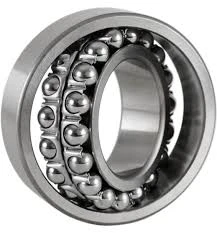
Nov . 05, 2024 21:40 Back to list
deep groove ball bearing number
Understanding Deep Groove Ball Bearing Numbers
Deep groove ball bearings are critical components in various mechanical systems, widely used in industrial machinery, automotive applications, and consumer products. Their design allows them to accommodate both radial and axial loads, making them versatile and efficient. One key aspect of these bearings is their identification number, which encodes essential information about their specifications. This article aims to elucidate the significance of these numbers and how they relate to bearing selection.
At its core, a bearing number or designation conveys specific details about the bearing’s design, size, and characteristics. Typically, this designation adheres to standardized systems established by organizations like the International Organization for Standardization (ISO) and American National Standards Institute (ANSI). By understanding the format of these numbers, users can quickly determine the right bearing for their needs.
For instance, a common numbering format for deep groove ball bearings is the ISO standard, which includes a series of digits and letters. The first digit usually represents the type of bearing; for deep groove ball bearings, it is often denoted by 6. The subsequent digits indicate the bore size, with values that directly relate to the inner diameter of the bearing in millimeters. For example, a deep groove ball bearing numbered 6205 indicates a bore diameter of 25 mm.
deep groove ball bearing number

In some cases, additional characters may signify particular features or variations. For example, the presence of a letter Z in the bearing number may indicate a metal shield on one side, while ZZ signifies shields on both sides. Similarly, a designation with “RS” means there is a rubber seal on one side, and “2RS” indicates seals on both sides. These additional features significantly impact the bearing's performance and suitability for specific applications.
When selecting a deep groove ball bearing, it is crucial to consider the operating environment and loads that the bearing will experience. High speeds, heavy loads, and exposure to contaminants all influence the type of bearing and its features. For instance, a sealed or shielded bearing is vital for environments where dust and moisture can infiltrate, potentially causing premature failure.
Moreover, the material and construction of the bearing can also be reflected in the number. Some manufacturers incorporate special materials or treatments, which can enhance the bearing's performance under specific conditions. This information is vital for engineers and technicians who must match the bearing to their application's requirements.
In conclusion, deep groove ball bearing numbers are not just arbitrary codes; they encapsulate critical information about the bearing's dimensions, design, and specific features. Understanding these designations is essential for selecting the right bearing for any mechanical application. By paying careful attention to the bearing number, one can ensure optimal performance, longevity, and reliability in their machinery. Whether you are a seasoned engineer or a DIY enthusiast, mastering bearing identification is a crucial skill in the world of mechanics.
Latest news
-
Premium Deep Groove Ball Bearings | High Speed & Reliability
NewsAug.29,2025
-
Durable Scaffolding Clamps - Secure & Reliable Tube Connectors
NewsAug.28,2025
-
Common Failures in Thrust Ball Bearings and Solutions
NewsAug.22,2025
-
How Tapered Roller Bearings Can Take Shock Loads
NewsAug.22,2025
-
Angular Bearings in High-Precision Spindles
NewsAug.22,2025
-
The Impact of Misalignment on Cylindrical Roller Bearing Performance
NewsAug.22,2025
